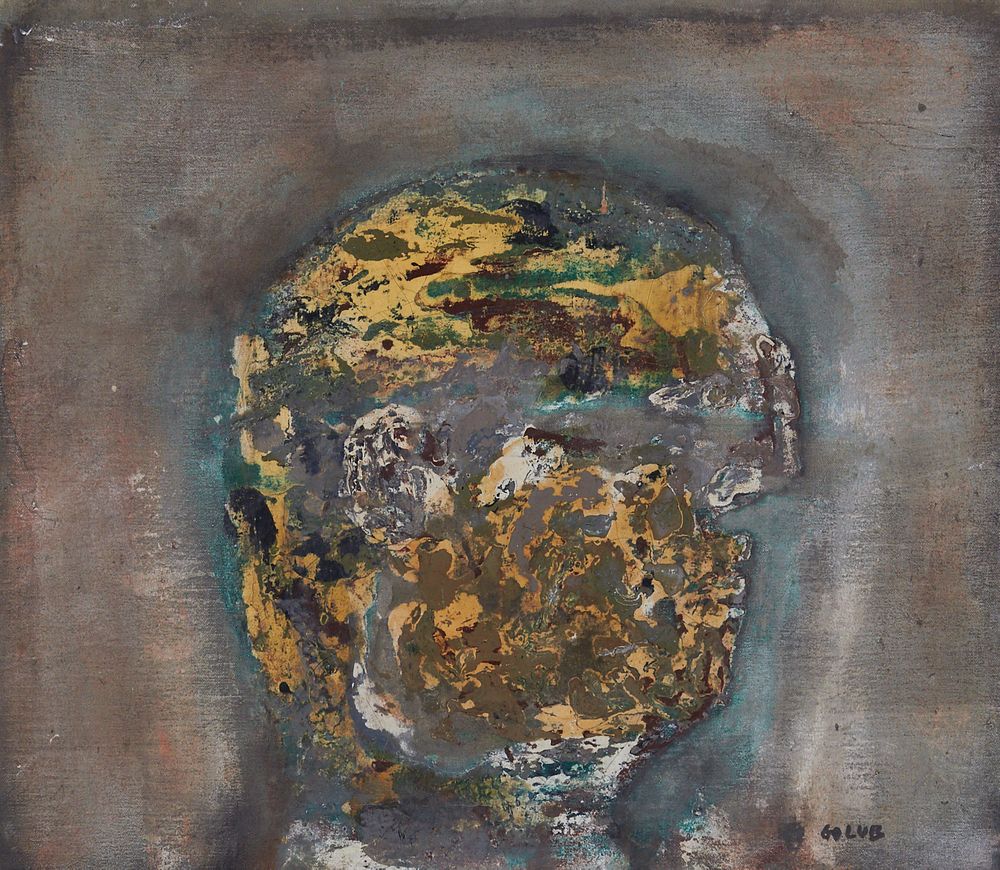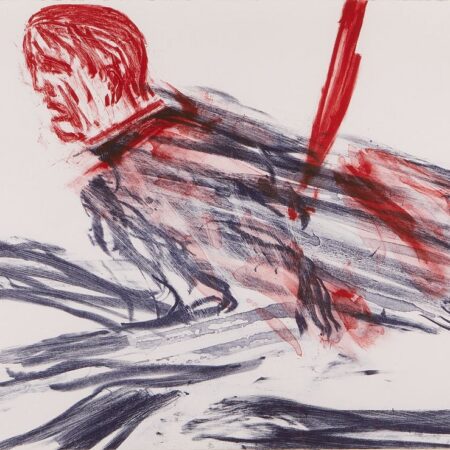
Leon Golub (American, 1922-2004).
Oil painting on canvas titled “Head (XXXVIII)” depicting an abstract, surrealist portrait of a figure in thick impasto of white, yellow, green, and gray pigments. Signed along the lower right. Initialed, signed, titled, and dated along the verso. Lot essay: Leon Golub is known for his disturbing, visceral, almost violent art. His approach centered social justice, forcing the viewer to face uncomfortable truths about the world and their place in it. Leon Golub grew up in Chicago and studied art history at the University of Chicago. After serving in World War II, he returned to Chicago where he used the G.I. Bill to study at the School of the Art Institute of Chicago. There, he and several classmates, including his future wife Nancy Spero, made up the ìMonster Roster.î This group, so dubbed due to the grisly and shocking content of their works, made a name for themselves on the Chicago and national art scenes.
Many members of the group, like Golub, were World War II veterans, dealing with the fallout from that violent portion of their lives. In the late 1950s, Golub and Spero moved to Europe. They started a family, and continued to explore artistic media and inspirations, notably Classical art and sculpture. Golub, who had previously painted primarily in lacquer, began working in acrylics, and began violently carving into the paint layers and grinding the paint onto the canvas. When Golub, Spero, and their children returned to the US in the late 1960s, the Vietnam War was in full swing and so too were the protests against it. Golub threw himself into protest art, creating confrontational paintings that decried the evils of the war. While his work was anti-establishment, the artistic establishment took a liking to him. Museums such as MoMA exhibited his works with other notable artists including Jackson Pollock, Francis Bacon, and Willem de Kooning.
Leon Golub continued to create art and agitate for social causes until his death in 2004. His later works included portraits of major political figures and violent works depicting terrorism and other evils of the world. Toward the end of his career and life, many of his works took on a more introspective focus on oneís own mortality. “Head (XXXVIII)” is an excellent example of Golubís figurative work. Portrait is a hugely important part of his oeuvre: many of his series have featured portraits, often of political leaders and war criminals. He has layered and scraped away the paints, making a palimpsest of the canvas. This head is a story told through texture and color, built up and broken down again. The lack of features on this face make it universal, and through that in some ways more frightening than his works that explicitly depict evil. The human head of a torturer or human rights violator, after all, looks much like the head of any other human when reduced to its essentials. The viewer is called upon to question and sit with the human experience, in all its complexity.
Unframed; height: 20 1/4 in x width: 23 3/8 in.
Framed; height: 21 in x width: 24 in.
$7,000
